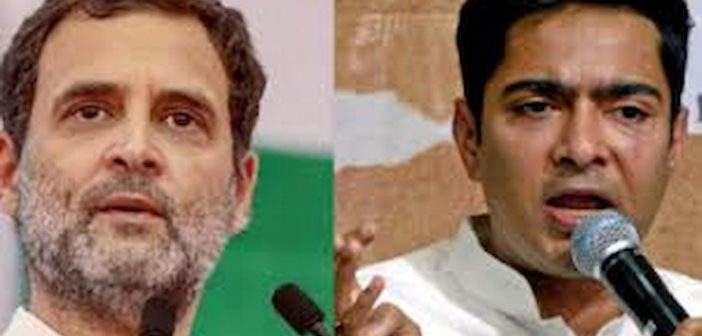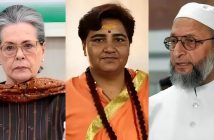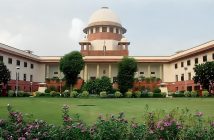As India gears up for the 2025 Bihar and Bengal elections, a riveting leadership battle unfolds. Rahul Gandhi, the national face of the Congress party, leverages his Bharat Jodo campaign to unite opposition forces. Meanwhile, Abhishek Banerjee, Trinamool Congress’s rising star, dominates West Bengal’s political landscape with strategic alliance-building. Both leaders, inheritors of political dynasties, vie to lead the opposition alliance in India in 2025. Who will shape the future of India’s opposition? This clash of experience, charisma, and strategy promises to redefine Indian political leadership. Dive into the dynamics of this generational shift.
Key Details
- Who: Rahul Gandhi (Congress) and Abhishek Banerjee (Trinamool Congress).
- What: Competing to lead the opposition alliance in India 2025.
- When: Ahead of the 2025 Bihar and Bengal elections.
- Where: Across India, with a focus on Bihar and West Bengal.
- Why: To unify opposition parties and counter the BJP’s narrative.
India’s political arena is abuzz as the 2025 Bihar and Bengal elections approach, spotlighting a fierce leadership contest. Rahul Gandhi, a seasoned campaigner for the Congress, and Abhishek Banerjee, a dynamic strategist for the Trinamool Congress, are at the forefront of the opposition alliance in India in 2025. Gandhi’s national stature and Bharat Jodo campaigns aim to unify diverse parties against the BJP’s dominance. In contrast, Banerjee’s regional clout and tactical manoeuvring in West Bengal position him as a formidable contender. Their rivalry raises critical questions: Who can effectively rally the opposition? Can Gandhi’s experience outshine Banerjee’s regional appeal? This article explores their political journeys, leadership styles, and roles in shaping opposition unity, offering a balanced analysis of their strengths, challenges, and potential to lead India’s opposition bloc into a transformative future.
Background
Rahul Gandhi, 54, carries the legacy of Congress, India’s oldest political party. His Bharat Jodo Yatra and Nyay Yatra campaigns have revitalized his image, emphasizing social justice and unity. With decades of national exposure, Gandhi appeals to diverse voter bases but faces criticism for inconsistent electoral success. Abhishek Banerjee, 37, is the nephew of TMC chief Mamata Banerjee. Since entering politics in 2011, he has significantly strengthened the TMC’s organizational presence in West Bengal. Known for his data-driven strategies, Banerjee has bolstered TMC’s regional dominance but lacks Gandhi’s national reach. Both leaders navigate internal party dynamics and the challenge of uniting regional parties in the opposition alliance in India 2025.
Key Events
- Rahul Gandhi’s Campaigns: The Bharat Jodo Yatra (2022-23) covered 4,000 km, uniting communities and boosting the morale of the Congress party. The Nyay Yatra (2024) focused on economic justice, resonating with youth. These campaigns strengthened Gandhi’s narrative as a unifier.
- Abhishek Banerjee’s Rise: Banerjee led the TMC to its 2021 victory in Bengal, securing 213 seats. His youth wing, TMC Youth, expanded voter outreach. In 2024, he spearheaded talks with regional parties, strengthening TMC’s role in opposition alliances.
- Alliance Tensions: Clashes between Congress and the Trinamool Congress surfaced in 2024 over seat-sharing in Bihar and Bengal, highlighting the differing priorities of Gandhi and Banerjee.
Stakeholder Perspectives
- Congress Supporters: “Rahul’s Bharat Jodo Yatra shows he can connect with the masses,” says Priya Sharma, a Congress worker. “His experience makes him the natural leader.”
- TMC Supporters: “Abhishek’s energy and strategic mind are unmatched,” claims Arjun Das, a TMC volunteer. “He’s West Bengal’s future and the opposition’s hope.”
- Analysts: Political analyst Neha Roy notes, “Gandhi’s national appeal contrasts with Banerjee’s regional strength. Their ability to collaborate will define opposition unity.”
Broader Implications
The Indian political leadership battle between Gandhi and Banerjee signals a generational shift. Gandhi’s inclusive, ideological approach contrasts with Banerjee’s pragmatic, regional focus. Rahul Gandhi’s leadership style emphasizes unity and social justice, appealing to urban youth and minority groups alike. However, Congress’s declining influence in states like Bihar limits its reach. Banerjee’s data-driven campaigns and TMC’s dominance in Bengal make him a regional powerhouse, but his national inexperience is a hurdle. The opposition alliance in India in 2025 hinges on their ability to bridge the divides between the Congress and the Trinamool Congress. A united front could challenge the BJP’s narrative on development and governance. Failure to align risks fragments the opposition, benefiting the ruling party.
Conclusion
The Rahul Gandhi-Abhishek Banerjee rivalry is more than a personal contest; it’s a battle for the soul of the opposition. Gandhi’s national vision and Banerjee’s regional prowess offer complementary strengths. Their success in forging a cohesive opposition alliance in India 2025 will shape India’s political future. As the elections in Bihar and Bengal approach, their leadership styles will be put to the test. Can they unite diverse parties to counter the BJP? The answer lies in their ability to strike a balance between ambition and collaboration, setting the stage for a transformative era in Indian politics.
Discover who will lead India’s opposition—read the complete analysis now!




